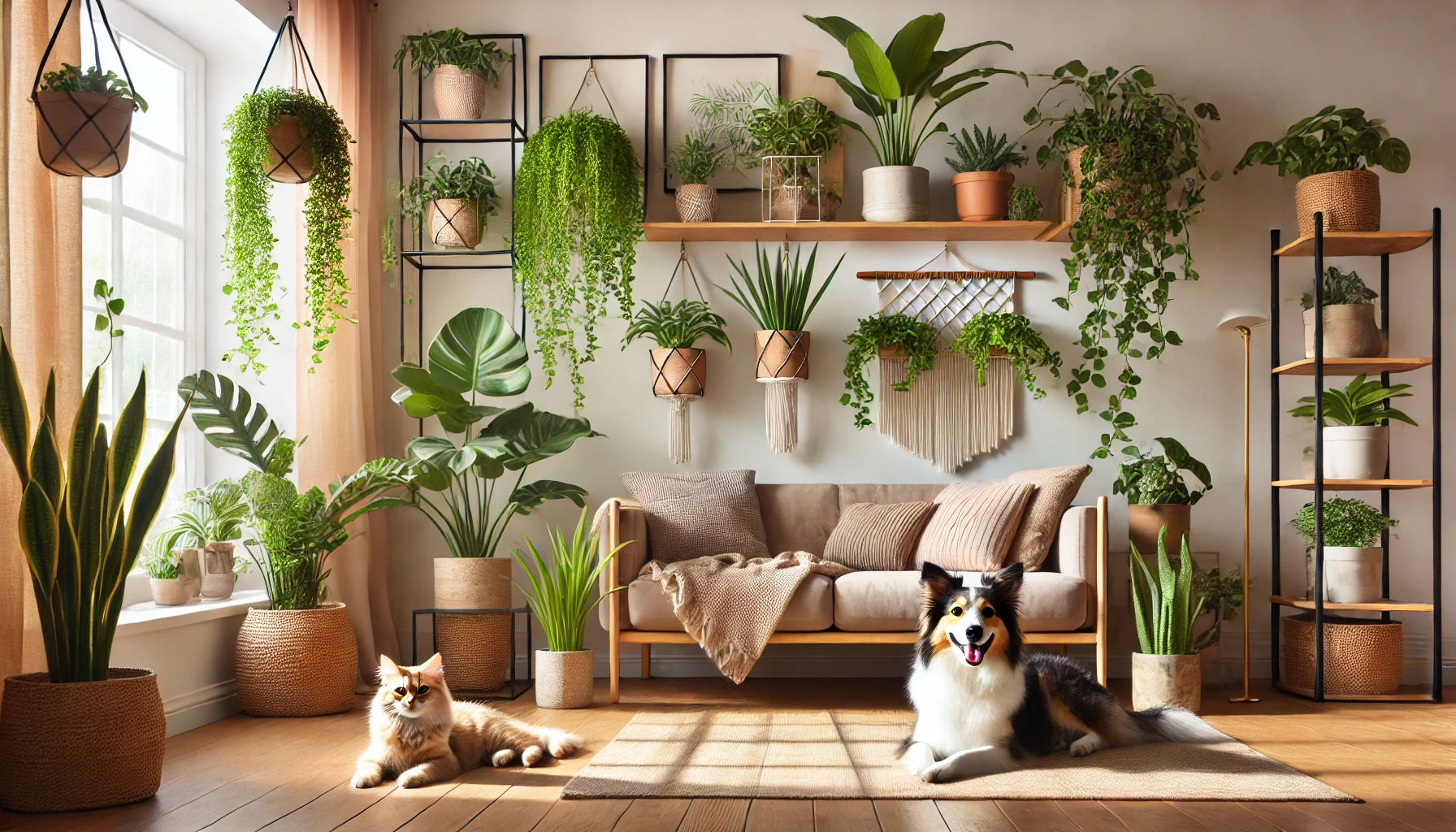If you’re a pet owner who loves decorating with plants, you might worry about the potential risks that greenery can pose to your furry friends. Some popular houseplants can be toxic to pets, causing mild to severe reactions if ingested. Fortunately, there are plenty of pet-safe plants that are both beautiful and non-toxic, making it easy to create a pet-friendly indoor jungle. This guide will help you select the right plants to keep your home green and your pets safe.
Why Choose Pet-Safe Plants?
Pets, especially cats and dogs, are naturally curious. They might chew on leaves, dig into pots, or play with hanging plants. While some plants may cause only minor irritation, others can lead to serious health issues if ingested. Choosing non-toxic plants ensures that your pets remain healthy, while you enjoy the benefits of indoor greenery.
Top Pet-Safe Plants
Here are some popular and pet-safe plant options that can add beauty to your home without compromising your pets’ safety:
1. Spider Plant (Chlorophytum comosum)
- Why it’s great: Spider plants are hardy, low-maintenance, and perfect for hanging baskets. Their arching leaves add a dynamic touch to any room.
- Pet benefits: They’re completely non-toxic and can even help improve indoor air quality.
2. Areca Palm (Dypsis lutescens)
- Why it’s great: With its feathery fronds, the Areca Palm brings a tropical vibe to your home. It thrives in bright, indirect light.
- Pet benefits: Safe for both cats and dogs, this plant is a popular choice for pet-friendly homes.
3. Parlour Palm (Chamaedorea elegans)
- Why it’s great: Another palm variety, the Parlour Palm is compact and elegant, making it ideal for small spaces.
- Pet benefits: Like the Areca Palm, it’s non-toxic and adds a lush, green aesthetic to your décor.
4. Calathea (Calathea spp.)
- Why it’s great: Known for their stunning, patterned leaves, Calatheas make a bold statement in any room. They thrive in humid environments and low to medium light.
- Pet benefits: Completely safe for pets, their leaves are too delicate for most animals to bother with.
5. Boston Fern (Nephrolepis exaltata)
- Why it’s great: Boston Ferns are classic indoor plants with cascading fronds that look beautiful in hanging pots or on shelves.
- Pet benefits: Non-toxic and pet-friendly, they also help maintain humidity in dry indoor spaces.
6. Bamboo Palm (Chamaedorea seifrizii)
- Why it’s great: This easy-to-grow plant provides height and volume, making it an excellent floor plant.
- Pet benefits: Completely safe for pets, it’s a great option for households with curious cats or playful dogs.

7. Baby’s Tears (Soleirolia soleirolii)
- Why it’s great: This plant creates a soft, moss-like carpet of green leaves that looks lovely in terrariums or as ground cover in pots.
- Pet benefits: Safe and non-toxic, it’s a favourite for small indoor gardens.
8. Friendship Plant (Pilea involucrata)
- Why it’s great: The Friendship Plant is known for its textured, velvety leaves and thrives in medium to low light conditions.
- Pet benefits: It’s entirely safe for pets and adds a charming touch to any indoor space.
Tips for Decorating with Pet-Safe Plants
1. Keep Plants Out of Reach
Even if a plant is non-toxic, excessive nibbling or digging can still cause mild stomach upset for pets. Use hanging pots, tall shelves, or plant stands to keep plants out of reach.
2. Avoid Fertilisers That May Be Harmful
Some fertilisers can be harmful to pets if ingested. Opt for organic or pet-safe fertilisers and always store them securely.
3. Provide Alternative Entertainment for Pets
Sometimes, pets chew on plants out of boredom. Provide plenty of toys and scratching posts to keep them entertained and away from your greenery.
4. Create a Separate Green Space for Your Pets
Consider dedicating a small, low-maintenance plant section specifically for your pets. For example, grow cat grass (wheatgrass) for cats to chew on safely.
Inspiring Example: The Pet-Friendly Living Room
Imagine a cosy living room with an elegant vertical garden of Spider Plants and Boston Ferns hanging from macramé planters. On a nearby shelf, pots of Calathea and Baby’s Tears create a lush display. In the corner, a tall Areca Palm adds height and drama. The entire room feels alive and green, yet perfectly safe for your curious dog or mischievous cat.
Plants to Avoid
While there are many pet-safe plants to choose from, some popular houseplants can be harmful to pets. It’s important to know which ones to avoid:
- Monstera (Toxic if ingested)
- Philodendron (Toxic to pets)
- Peace Lily (Can cause irritation if eaten)
- Pothos (Toxic if consumed)
Always double-check a plant’s toxicity level before bringing it into a pet-friendly home.
Final Thoughts
Creating a pet-friendly home filled with plants is easier than you might think. With a bit of research and thoughtful choices, you can enjoy the benefits of indoor greenery while keeping your furry friends safe. Plants like Spider Plants, Boston Ferns, and Areca Palms are beautiful, non-toxic options that blend well with any décor style. Start with one or two plants, experiment with placements, and build your pet-friendly indoor garden one step at a time. Your home will look greener, and your pets will thank you for it!

